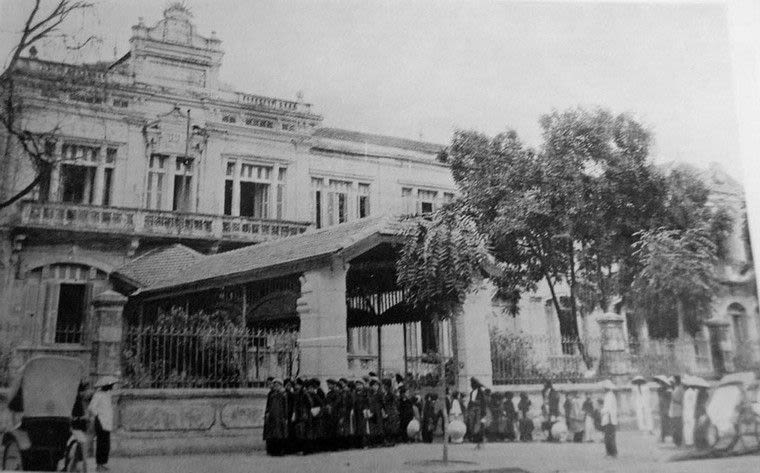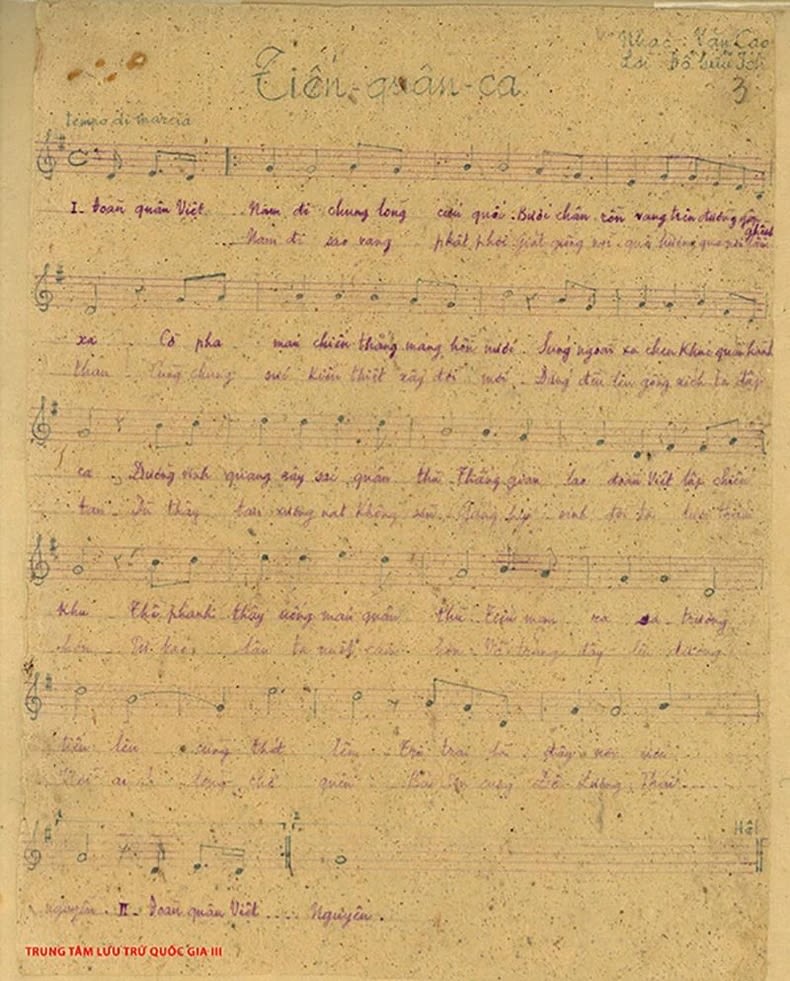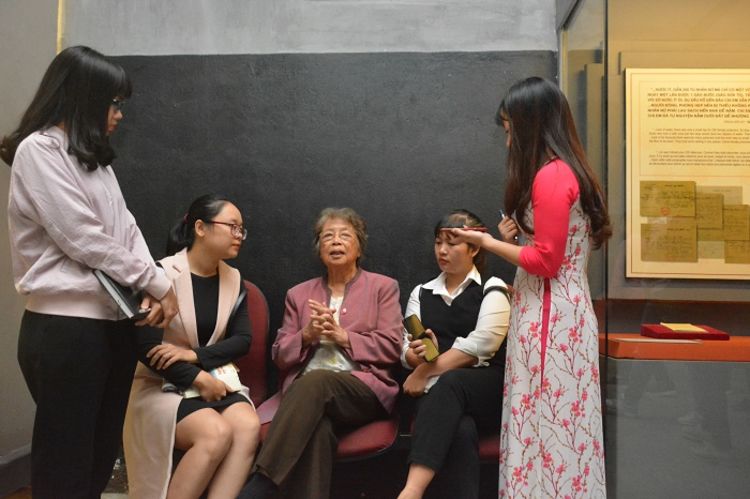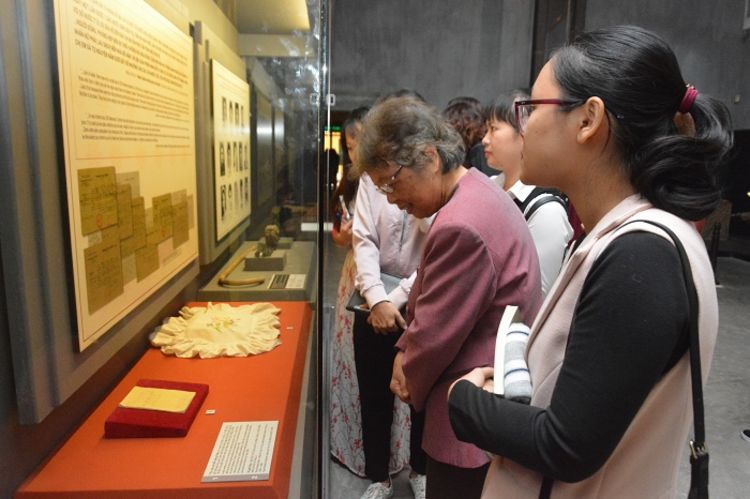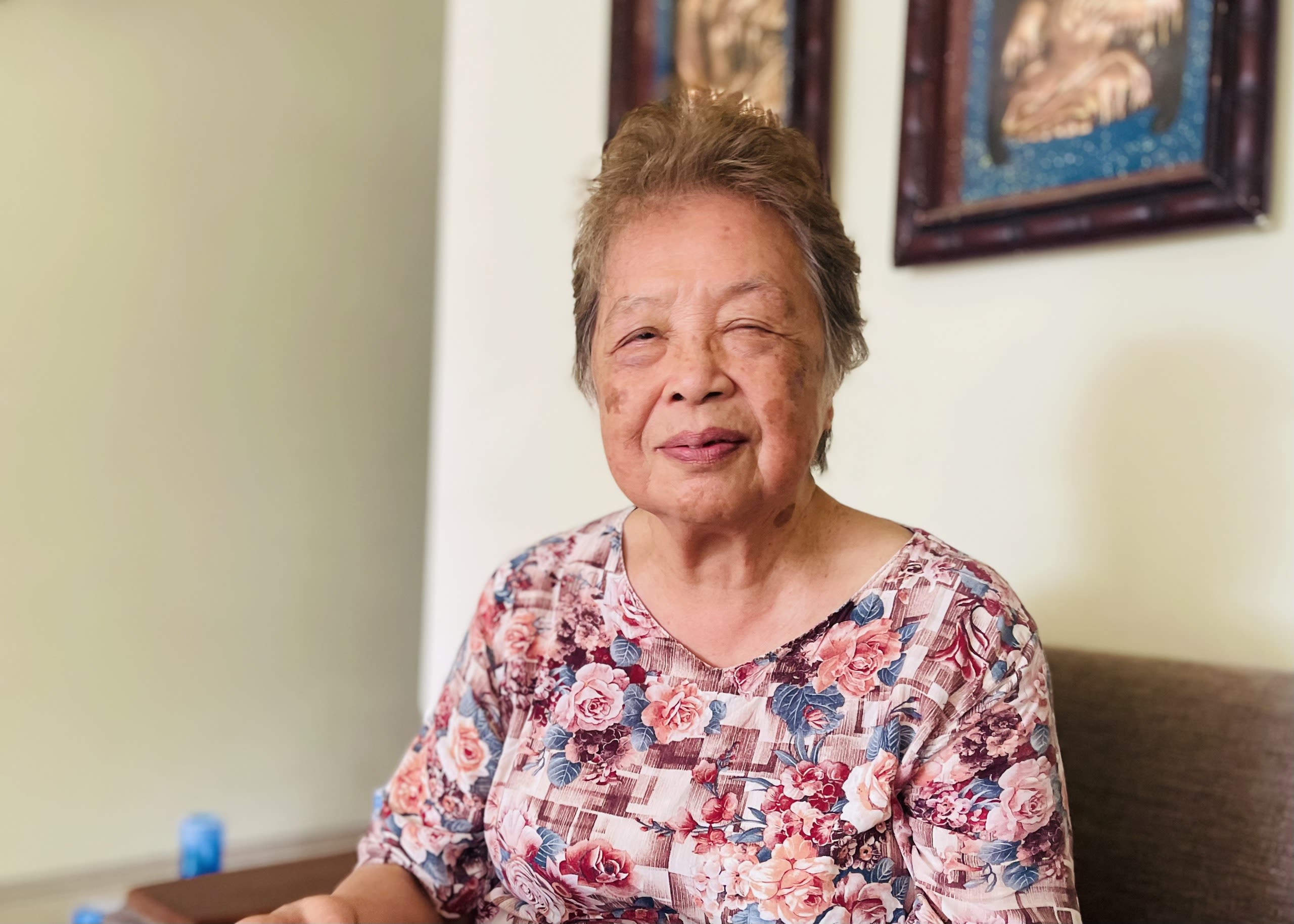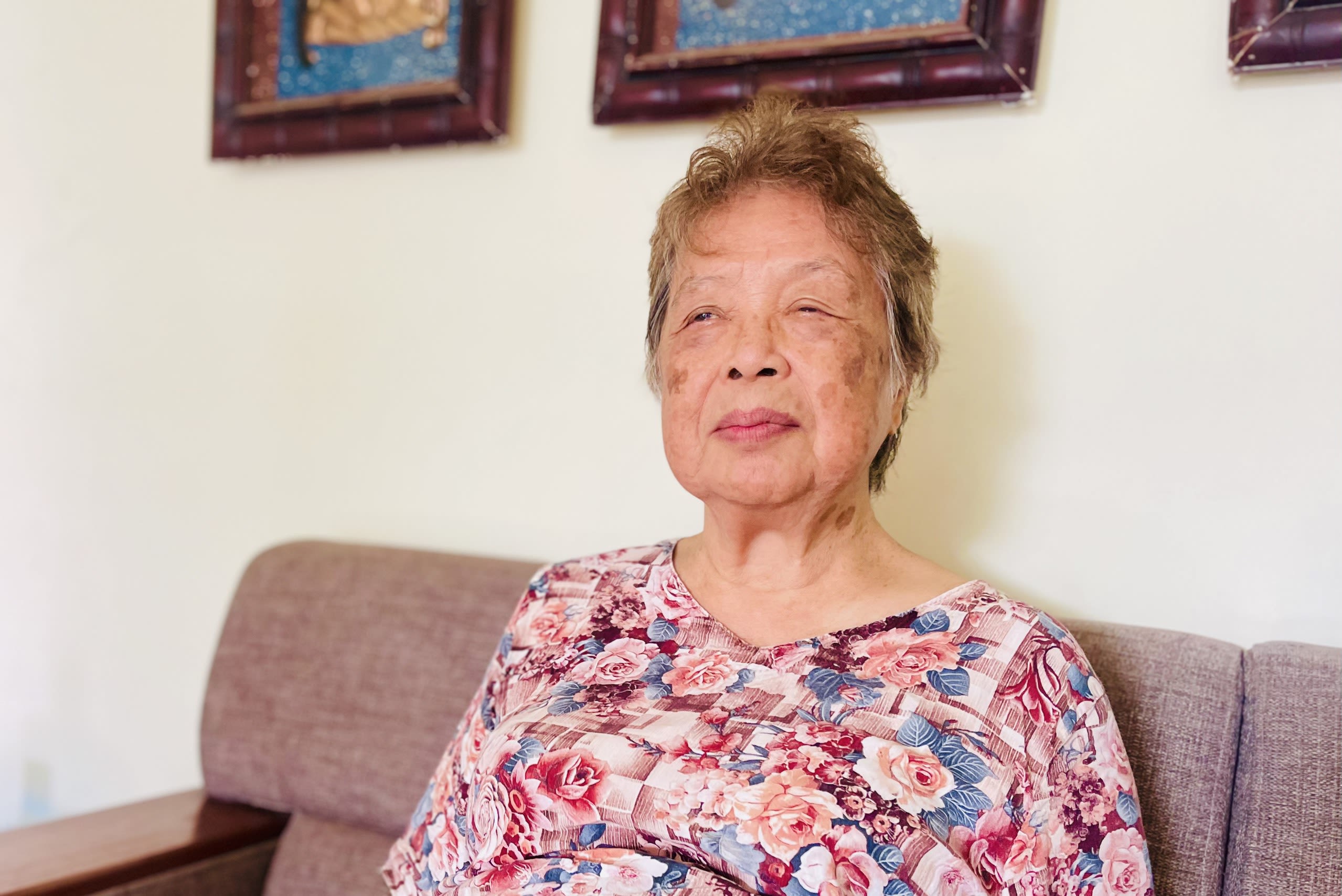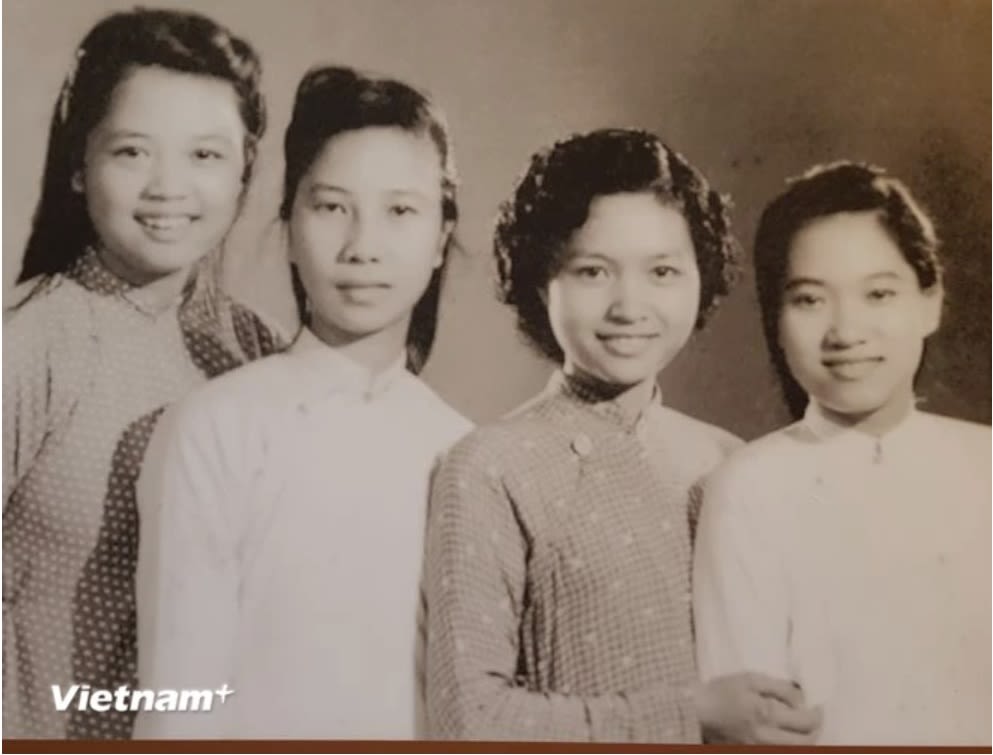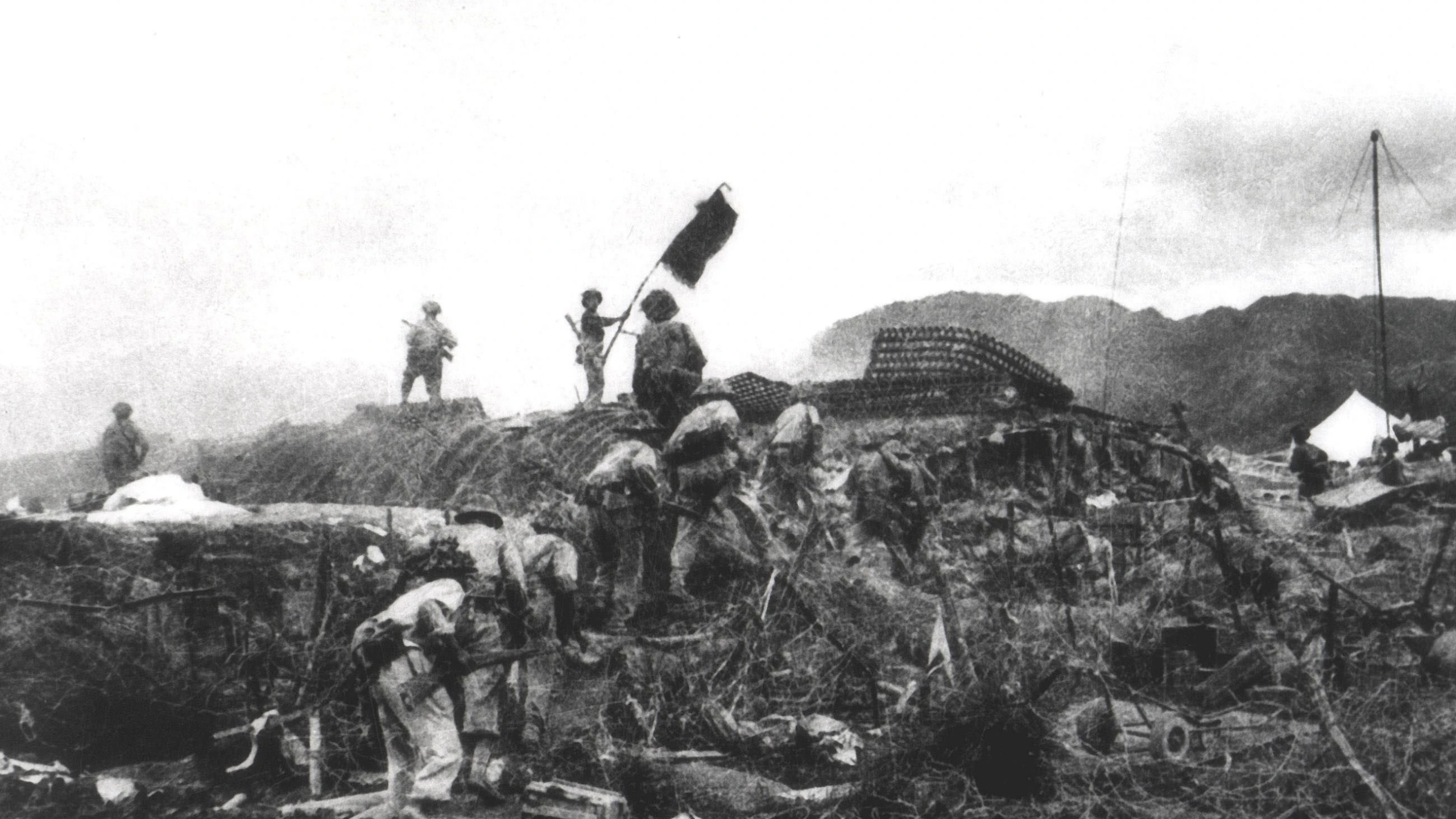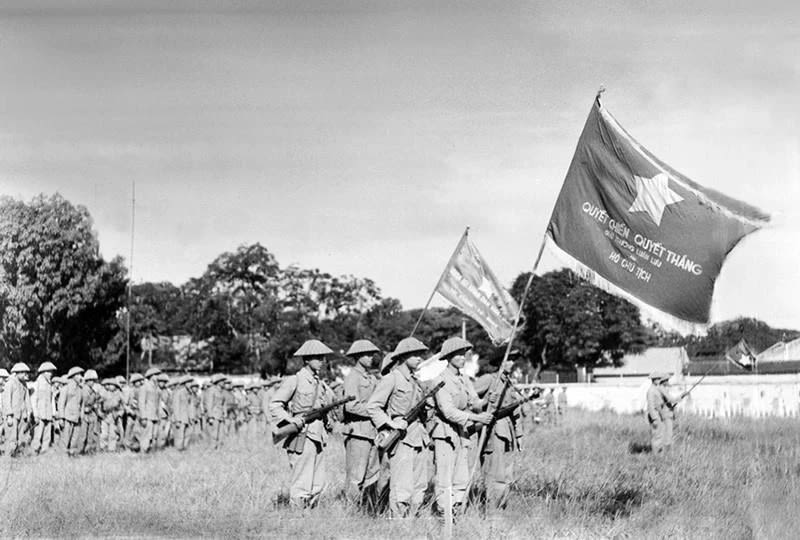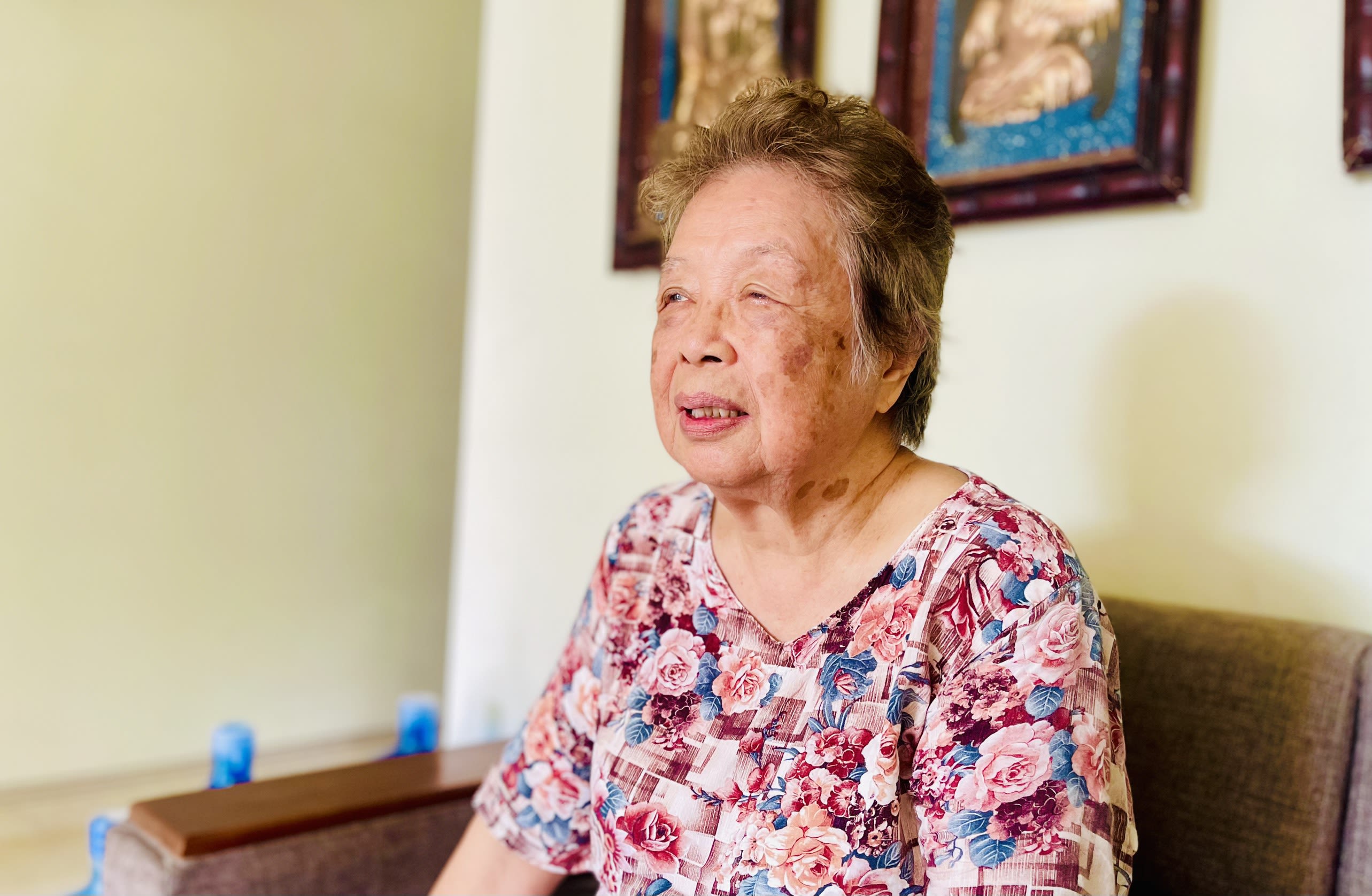
Hanoi on the day of takeover in the memory of a female resistance student
At the age of 91, Do Hong Phan is still very alert. Recalling the passionate time of more than 70 years ago, she showed us the scar still imprinted on her arm, the trace of a time of bravery, cutting her own veins in protest against the French soldiers in Hoa Lo Prison to maintain the student resistance movement in Hanoi during the temporary occupation period of 1947-1954. She said that her courage was probably due to the “revolutionary atmosphere” that had gradually penetrated her subconscious since primary school.
“My bravery is nothing compared to the soldiers”
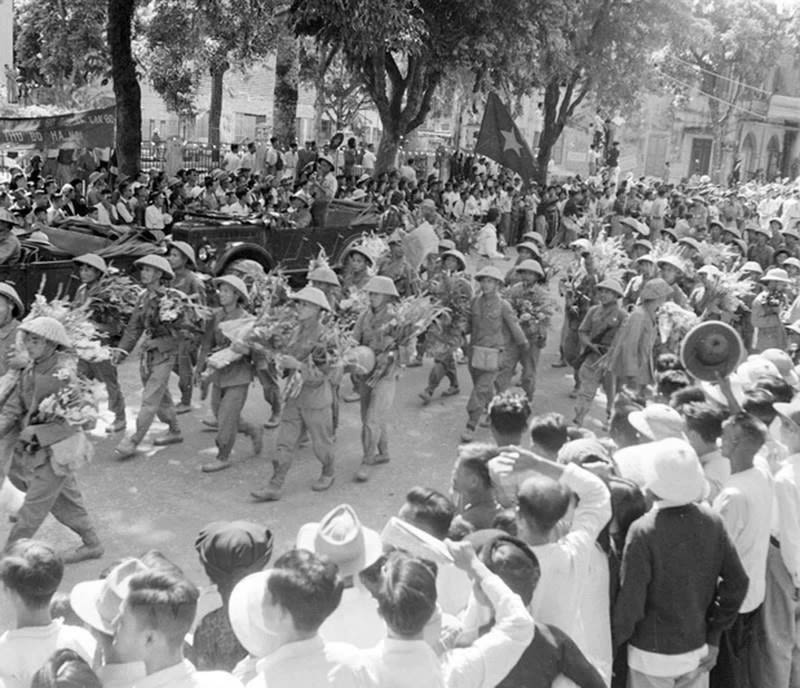
In 1950, when she was imprisoned in Hoa Lo Prison, in order to preserve her integrity and not want to implicate anyone, female student Do Hong Phan broke her rice bowl and wrote four slogans on the wall of her cell: Long live the success of the world proletarian revolution! Long live the success of the resistance! Long live the Indochinese Communist Party! Long live President Ho! Then she cut her own veins.
Many newspapers have recounted this story in detail, as a symbol of the courage and loyalty of students in the student resistance movement in Hanoi, sparking a wave of protests.
Dong Khanh Girls' School (now Trung Vuong Secondary School, 26 Hang Bai) in Hanoi in the early 20th century.
Dong Khanh Girls' School (now Trung Vuong Secondary School, 26 Hang Bai) in Hanoi in the early 20th century.
At that time, Do Hong Phan was a student at Chu Van An National High School and was trusted by the Municipal Youth Union to be assigned as Secretary of the Student Resistance Union of Trung Vuong Girls' School.
According to her memories, during the period when the French colonialists temporarily occupied Hanoi, the student resistance movement developed strongly, notably including the 12-day strike of more than 4,000 students and the memorial service for Tran Van On, which opened the climax of the student resistance movement in the years 1949-1950.
Do Hong Phan participated actively in movements such as delivering letters calling for boycott of classes or printing and distributing leaflets, as well as got actively involved in the activities of the resistance student union.
Manuscript of the song ‘Tien Quan Ca’ (The Song of the Marching Troops) by musician Van Cao. (Photo: National Archives Center III, Prime Minister's Office, file 590, page 3)
Manuscript of the song ‘Tien Quan Ca’ (The Song of the Marching Troops) by musician Van Cao. (Photo: National Archives Center III, Prime Minister's Office, file 590, page 3)
In 1950, upon hearing news of the Autumn-Winter Border Campaign victory, she had the idea of canvassing her classmates to hang a large fabric red flag with yellow star on the premises of Trung Vuong School, along with distributing leaflets and setting off firecrackers to celebrate. When seeing the red flag with yellow star flying, all in the school playground sang the Tien Quan Ca (Song of the Marching Troops) in unison. At that moment, everyone felt immensely proud.
The image reminded Phan of her childhood as a primary school pupil. During her tram rides or visits to exhibitions at the Opera House, she saw the communist soldiers seize every second and minute to hang the red flags with the yellow star and loudly chanted the slogan against the French and the Japanese, and in support of Vietnamese independence, calling on people to support the Viet Minh.
That shocking event caused the French to immediately take action to suppress, terrorise, and arrest a series of female students at the school. Phan was arrested when she was exchanging information and handing over documents at the home of another Trung Vuong female student on Cua Dong Street.
Do Hong Phan recalls her memories (Photo: hoalo.vn)
Do Hong Phan recalls her memories (Photo: hoalo.vn)
Do Hong Phan admires a letter she wrote to students in Hanoi before attending the International Conference on Youth Rights Protection in Vienna, Austria, in 1953. (Photo: hoalo.vn)
Do Hong Phan admires a letter she wrote to students in Hanoi before attending the International Conference on Youth Rights Protection in Vienna, Austria, in 1953. (Photo: hoalo.vn)
Do Hong Phan.
Do Hong Phan.
At the Secret Service Department, they tortured her brutally to force her to reveal the persons involved in the propaganda movement on the border victory. She cut the blood vessels on her arm in protest. Upon learning of this incident, the French troops took her to Phu Doan Hospital (currently Viet Duc Friendship Hospital) for treatment. After her health recovered, they transferred her to the female camp of Hoa Lo Prison.
In her memoir, Do Hong Phan recounted during that time, in the inner city, although the student resistance movement was terrorised wave after wave, it did not collapse. Many members were sent to the 'So Mat tham' (Intelligence Department) and Hoa Lo Prison one after another, but the movement still spread throughout the schools.
In the moment when she no longer thought about life or death but only wanted to preserve the student force and the movement, leading to the act of cutting her hand and committing suicide, Do Hong Phan confided: “As the head of the student activities at that time, if I did not stand up and take full responsibility, they would continue to torture those female students, and then the student movement might be crushed. My thoughts then were that simple, even though I knew that prison was terrifying. After that, all the female students were released, they took me to the 'So Mat thám' to torture me, and then sent me to Hoa Lo Prison.”
During the two months in Hoa Lo Prison, female student Hong Phan received dedicated care and help from female political prisoners. Thanks to that, the female student seemed to have more strength to overcome the fear and pain of being physically tortured. During her imprisonment, she still tried to contact and listen to news from the outside each time her biological mother visited.
Do Hong Phan recalling the tortures she had endured
Do Hong Phan recalling the tortures she had endured
At that time, Hanoi newspapers published her story, causing a wave of protest in the student resistance movement. The young female student's act of cutting her hand to commit suicide caused a stir. The Hanoi Youth Union continuously organised struggles to protest the oppression of the French colonialists.
On January 21, 1951, after her family was called up many times to sign a commitment that she wouldn’t participate in the student’s movements anymore, Phan was released because she was not 18 years old.
During the conversation, I repeatedly asked her to tell more stories about the struggles in Hoa Lo Prison, but she just smiled and said that what she endured lasted a few months and was nothing compared to the hardships and pain that the soldiers went through every day.
Four female students sing the song ‘Truong Ca Song Lo’ (Epic of the Lo river) by musician Van Cao at the Hanoi Opera House in 1950, Do Hong Phan stands on the far left. (Photo: VNA)
Four female students sing the song ‘Truong Ca Song Lo’ (Epic of the Lo river) by musician Van Cao at the Hanoi Opera House in 1950, Do Hong Phan stands on the far left. (Photo: VNA)
In 1952, she was secretly brought to the liberated zone by the Resistance Department's liaison system. During this time, she was selected to be a member of the young delegation from the temporarily occupied area to attend the International Youth Conference in Romania. Having the opportunity to interact and meet international students and listen to young Vietnamese representatives talk about the war in the colony, she became more patriotic, gaining a deeper understanding of the hardships of her compatriots and soldiers.
Hanoi - the day of return
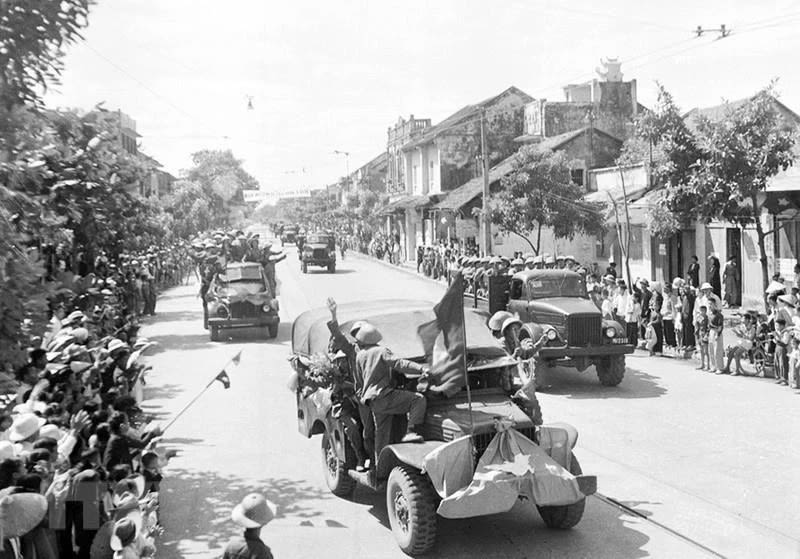
After the Dien Bien Phu victory and the signing of the Geneva Agreement, the Youth Union Central Committee called the youth delegation back to Dai Tu (Thai Nguyen Province) to prepare for the take-over day of Hanoi.The students at that time were thoroughly trained about their duties and attitudes when returning to the capital.
Two days before the day of taking over the capital, the group of students returned to Hanoi. From Dai Tu (Thai Nguyen), vehicles went through Phu Tho, crossed the Thao River, went to Hung Hoa, and then returned to the station in Thuong Tin.
Early on October 10, Hanoi was bright with flags and flowers. There, her mother and siblings were waiting. Female student Do Hong Phan was also very excited. After two years in the liberated zone, she was able to go to Romania to attend a conference, and this return would be very different from before. The spirit of freedom filled the female student with joy.
Looking into the distance, she recalled the scene: “We sat on the vehicle, waving our hands nonstop. Our vehicles went to Bach Mai and Mo markets, then continued on Hang Gai, Hang Bong, and Cua Nam streets and up to Hanoi Flagpole. All around us, the atmosphere was extremely joyful as I saw the stream of people carrying flags, waving flowers, and giving gifts to each other. The entire street, from the beginning of Trang Tien to the tram stop and the beginning of Hang Dao Street, students gathered together, playing music, singing, chatting, bustling the whole street corner.”
The youth union gathering point was at the Don Thuy wharf area (now the Central Military Hospital 108). The group's leader announced that whoever had a home in Hanoi could go. She quickly went home on Hang Bong Street to visit her parents and relatives for a few days and then returned to the movement and schools in Hanoi.
On the afternoon of May 7, 1954, the “Determination to fight - Determination to win” flag of the Vietnam People's Army flew over the roof of General De Castries' bunker. The historic Dien Bien Phu campaign was a complete victory. (Photo: Archive/VNA)
On the afternoon of May 7, 1954, the “Determination to fight - Determination to win” flag of the Vietnam People's Army flew over the roof of General De Castries' bunker. The historic Dien Bien Phu campaign was a complete victory. (Photo: Archive/VNA)
A unit of the Capital Regiment with the “Determination to fight, Determination to win” flag, presented by President Ho Chi Minh, attended the first flag-raising ceremony on the Capital Liberation Day, which took place at the Flagpole yard (now Doan Mon - Thang Long Imperial Citadel) at 3:00 p.m. on October 10, 1954. (Photo: Archive/VNA)
A unit of the Capital Regiment with the “Determination to fight, Determination to win” flag, presented by President Ho Chi Minh, attended the first flag-raising ceremony on the Capital Liberation Day, which took place at the Flagpole yard (now Doan Mon - Thang Long Imperial Citadel) at 3:00 p.m. on October 10, 1954. (Photo: Archive/VNA)
The Youth Union Central Committee assigned the group to do school-related work. “We helped the Ministry of Education and Training implement the takeover of schools and restoration of school activities, as well as organise collective and cultural events. Teams went to the residential areas to clean up, teach children to sing, and visit families,” Phan recounted.
After completing her secondary education, she attended the University of Science and Technology, majoring in Irrigation. Later, Phan worked at the Ministry of Irrigation, and before retiring, she served as the Director of the International Cooperation Department at the Ministry of Irrigation (now the General Department of Irrigation under the Ministry of Agriculture and Rural Development). After many years of contributing to the reconstruction of Hanoi alongside generations of youth, she has dedicated her entire life to the field of irrigation in Vietnam. She is an expert with many years of research on projects related to the Mekong River.
Do Hong Phan recalls the historic days 70 years ago
Do Hong Phan recalls the historic days 70 years ago
Every October, the students and youth from the resistance movement of that time always feel a deep sense of emotion. In recent years, after the COVID-19 pandemic, Do Hong Phan has had fewer opportunities to meet with friends, as some have passed away or changed their contact information. In this special year, marking the 70th anniversary of the liberation of the capital city, at this rare age, she shared that she doesn't know who she will meet again to reminisce about that glorious period in history. When we expressed a desire to capture the memories of those wounds, she brushed it off, saying: “At that time, anyone in my position would have done the same; there was nothing to capture.”
At 91, her sharpness and determination is inspiring to young people like us, offering valuable lessons about dedication and steadfastness in revolutionary ideals.
Production managers: Nam Dong - Huu Viet
Content: Thao Le - Thien Lam
Design: Diec Duong
Photos: Thien Lam, hoalo.vn; National Archives Center III; VNA
